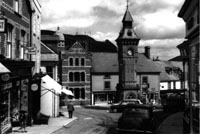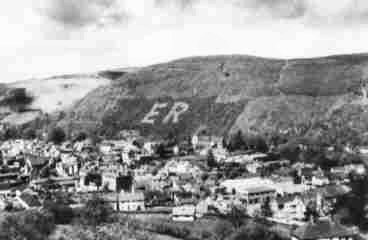 In
the year 1230 Henry III had granted Knighton the right to hold a market every
Thursday and somehow the town authorities had managed to cling on to this privilege
during the dark years after the defeat by Owain Glyndwr. After the Act of Union,
when things became more stable, Knighton grew into a flourishing market town
and by the 18th century it was an important corn and sheep market, which, with
the coming of the railway in 1861, became nationally known. In
the year 1230 Henry III had granted Knighton the right to hold a market every
Thursday and somehow the town authorities had managed to cling on to this privilege
during the dark years after the defeat by Owain Glyndwr. After the Act of Union,
when things became more stable, Knighton grew into a flourishing market town
and by the 18th century it was an important corn and sheep market, which, with
the coming of the railway in 1861, became nationally known.
Sheep and corn were not the only things to be sold at the market for, up until
the middle of the 19th century, husbands could auction their wives there too.
The last recorded sale of a wife was in 1854.
Like every self-respecting town, Knighton had a whipping post and one of the
regular market day entertainments was to see petty criminals been whipped from
the bridge to the market hall and back until the ‘back be bloody’.
Women were treated the same as men and Knighton was by no means singular in
this. In Ludlow there are records of women being stripped to the waist and tied
to a cart’s tail and being whipped round the town until, as in the case
of Knighton, the ‘back be bloody’.
 |
 |
General view of Knighton, taken from the Frydd. The Welsh
name for the town,
Tref-y-Clawdd, means 'the town on the Dyke', after the celebrated Offa's
Dyke attributed to King Offa of Mercia. The Dyke can be seen in the
left background and Kinsley Hill with 'ER' in the trees on the right.
Picture on the RIGHT.
Clock tower and church street. The Town clock was built by Haddon Brothers
ion 1872, and stands on the site of the old town hall. |
|

